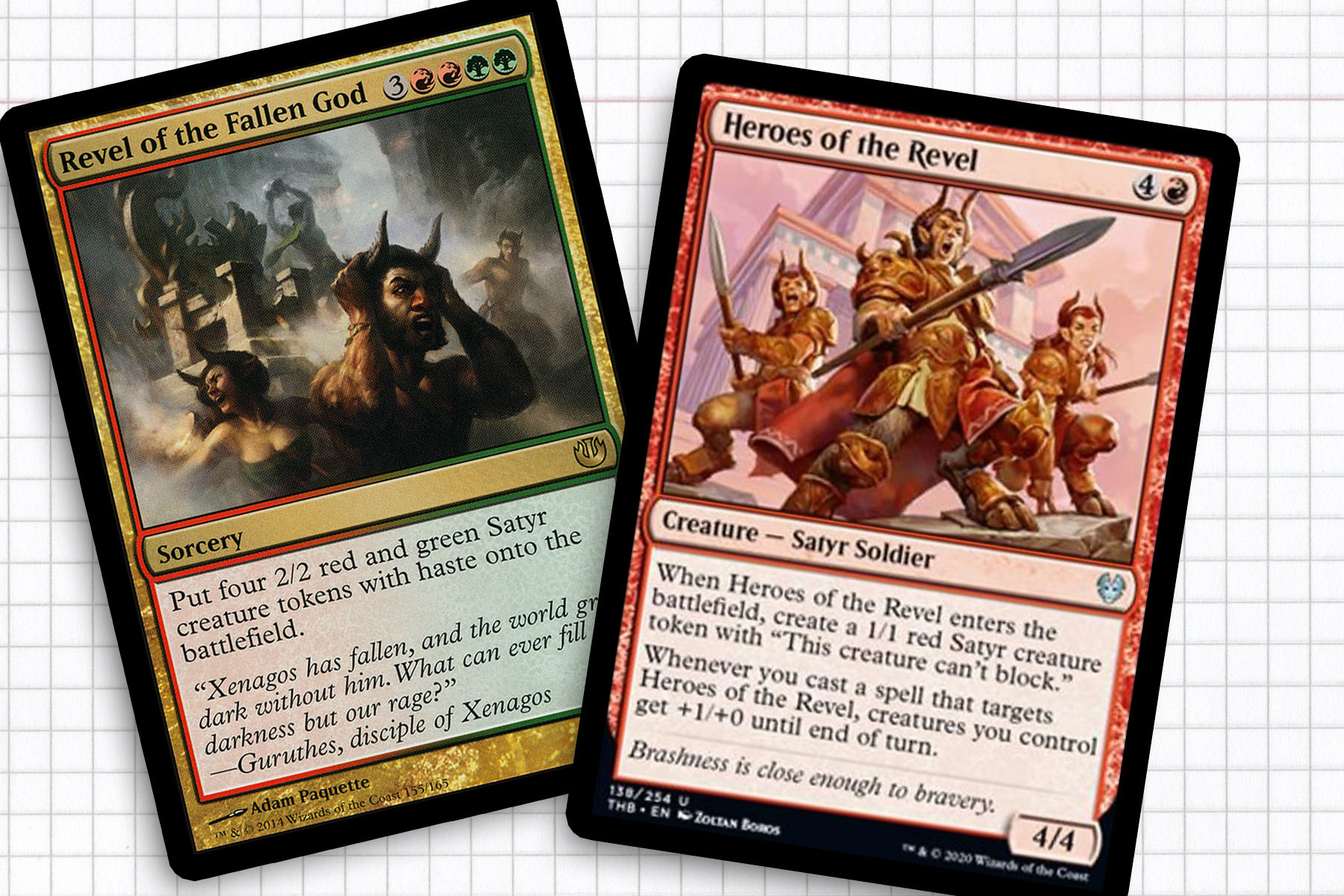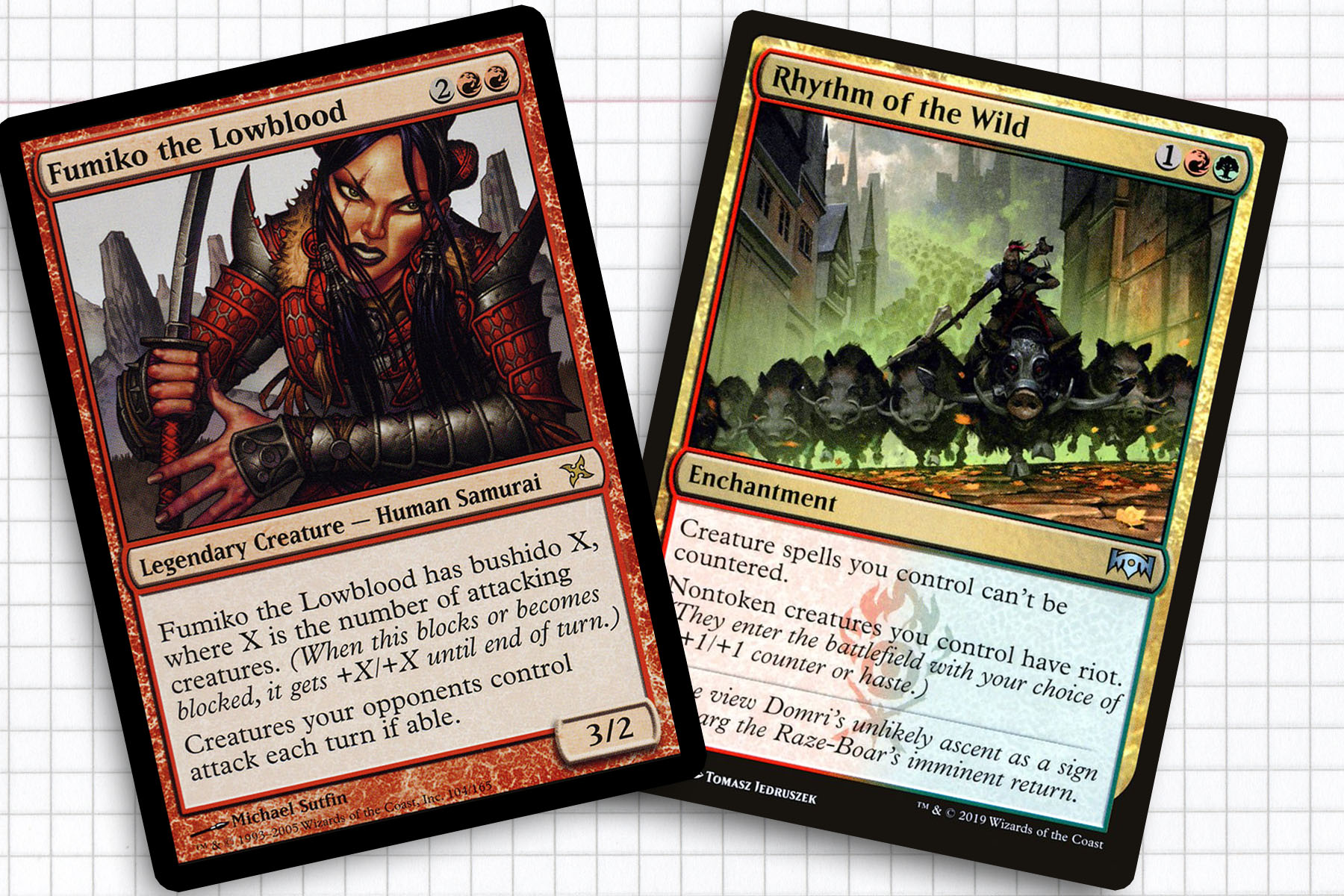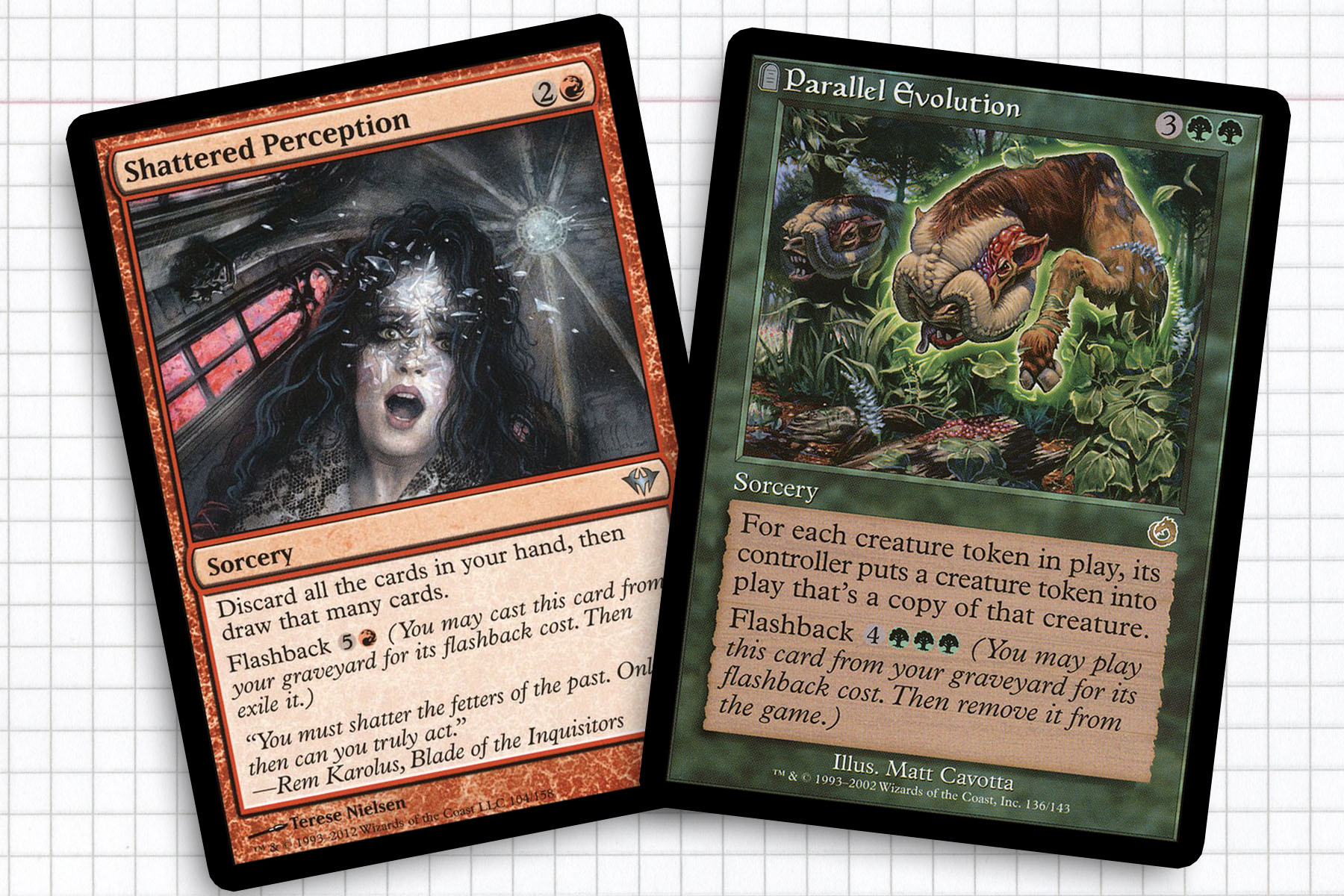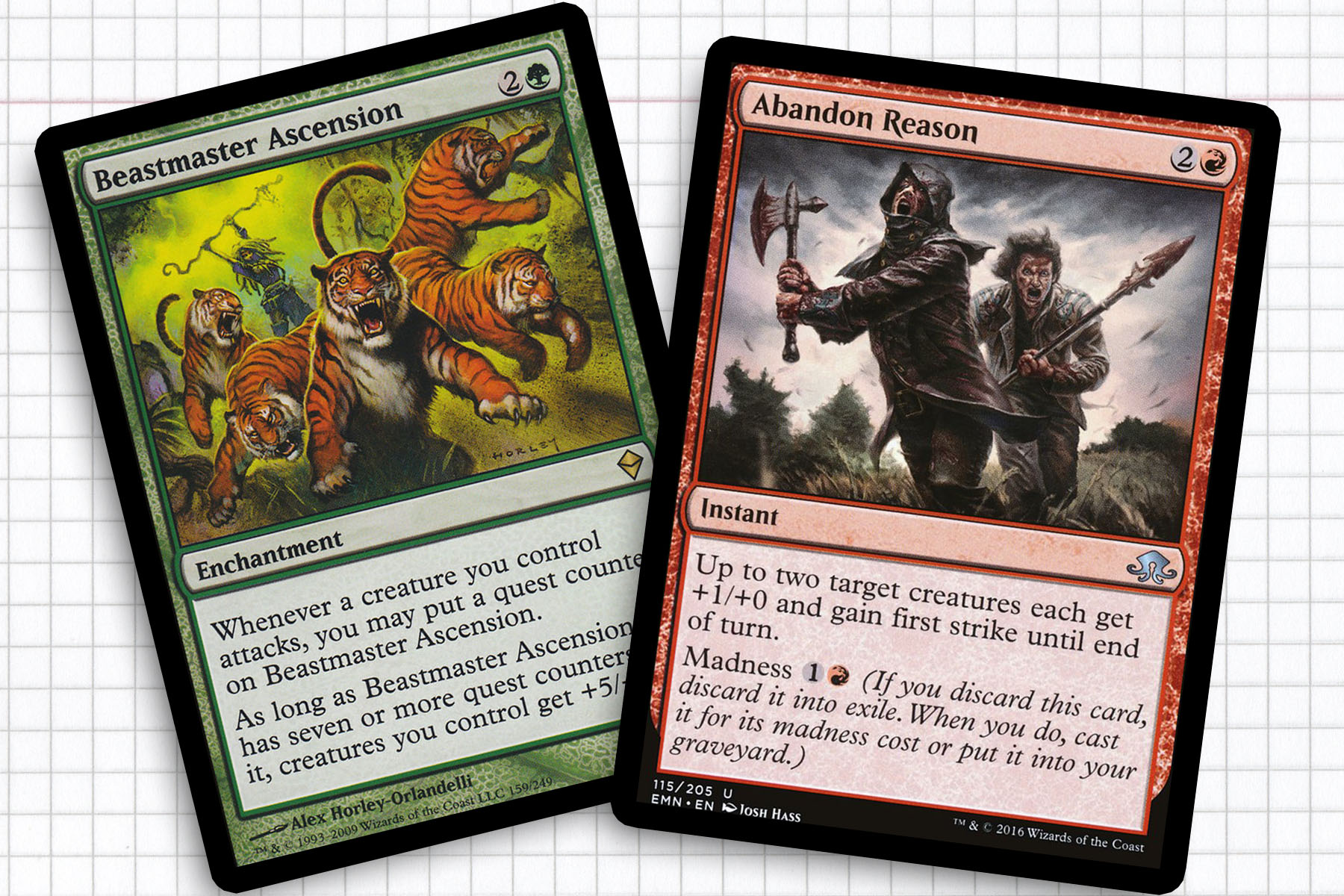Tribal is a part of the average Magic player’s lexicon—the general idea has existed since Alpha’s printing of Goblin King, Zombie Master, and Lord of Atlantis. The basic idea is to find creatures with a shared creature type and play them together. I think the idea is tied similarly to people’s love of factions, as seen during our trips to Ravnica, Tarkir, and Alara. Tribal is another way within Magic to find a sense of identity that’s not singularly tied to a color.
For better or worse, not all creature types get the same attention. In the case of today’s article, I want to talk about a tribe finally seeing support in Theros Beyond Death: Satyr. While I had no mental picture of what I expected the lord that would be known as Gallia of the Endless Dance to look like, I appreciate that she is open-ended enough to work for anything within her color identity by caring about attacking as well. We’re going to be prioritizing satyr when it comes to creature typing, I also want to show off what happens when creatures start attacking and victories are won through combat.
General: Gallia of the Endless Dance
Creatures: Adaptive Automaton, Anax, Hardened in the Forge, Beast Whisperer, Boon Satyr, Bramble Sovereign, Chameleon Colossus, Eternal Witness, Firedrinker Satyr, Fumiko the Lowblood, Grand Warlord Radha, Grumgully, the Generous, Heroes of the Revel, Irreverent Revelers, Instigator Gang, Lumbering Satyr, Metallic Mimic, Nyxborn Rollicker, Ogre Battledriver, Prowling Serpopard, Satyr Grovedancer, Satyr Hedonist, Satyr Hoplite, Satyr Piper, Satyr Rambler, Satyr Wayfinder, Setessan Oathsworn, Taurean Mauler, Universal Automaton, Wild Celebrants
Artifacts: Blade of Selves, Gruul Locket, Gruul Signet, Rhonas’s Monument
Enchantments: Beastmaster Ascension, Berserkers’ Onslaught, Dual Nature, Familiar Ground, Ferocity of the Wilds, Gruul War Chant, Rhythm of the Wild, Shared Animosity, Song of the Dryads
Instants: Abandon Reason, Ancient Grudge, Shared Summons, Tribal Unity
Sorceries: Creeping Renaissance, Deep Reconnaissance, Explore, [mtg_card]Explosive Vegetation, Insurrection, Kodama’s Reach, Overrun, Parallel Evolution, Revel of the Fallen God, Rollick of Abandon, Satyr’s Cunning, Shamanic Revelation, Shattered Perception, Shenanigans, Triumph of the Hordes
Planeswalker: Xenagos, the Reveler
Land: 7 Forest, 9 Mountain, Cinder Glade, Command Tower, Emergence Zone, Evolving Wilds, Forgotten Cave, Ghost Quarter, Gruul Turf, Kessig Wolf Run, Memorial to Unity, Mosswort Bridge, Myriad Landscape, Reliquary Tower, Rootbound Crag, Rugged Highlands, Sanctum of Eternity, Sheltered Thicket, Stomping Ground, Temple of Abandon, Temple of the False God, Terramorphic Expanse, Timber Gorge, Tranquil Thicket

Satyr Tribal
Theros Beyond Death brought with it a lot of a solid new additions to any deck looking to indulge in the satyr tribe. I already talked a few weeks ago about how Anax, Hardened in the Forge as a general could offer red a way of combating mass removal spells. But in a deck that cares about the tokens he produces specifically, Shared Animosity, Revel of the Fallen God, and Ogre Battledriver become bonafide win conditions.
Diving deeper into new cards, Heroes of the Revel might not be my first choice when it comes to tribal cards; but with our general in play, this becomes seven hastened damage over two bodies for five mana. Irreverent Revelers is a relevant Manic Vandal that can be its own encouragement if need be. And Satyr’s Cunning may be a meek roleplayer, but I believe it could offer us a great deal of staying power late in the game.
Of course no discussion about tribal spells is going to happen without considering changelings, the miraculous subsection of cards that helps to fill out any tribal strategy. For our color identity, it doesn’t get more high-profile than Chameleon Colossus, which benefits from Gallia pumping satyrs, making it exponentially bigger on turns where we want strike a finishing blow. But there is also Taurean Mauler, who very similarly to Forgotten Ancient, can grow out of hand for damaged based removal very quickly. And I will never stop praising Universal Automaton as the one-drop for every tribal deck.

Creature-based Fun
Satyr are not the most robust of the tribes. Thus it’s equally important that we have methods of not only improving them, but disproportionately weighing the battlefield down in our favor even if our general isn’t out. Rhythm of the Wild was one of my favorite cards to come out last year, because it had the ability to be an incredible top deck in the final minutes of a game, making the creatures in my hand or on top of my deck unpredictable threats. Here is should prevent our creatures from being countered by any control players at the table, while also making them either gain haste or some bulk if they already have it.
If Rhythm doesn’t manifest on top of our deck, Prowling Serpopard is going to be a fine impression of it. We’re very well off here with a sizable body for three mana, plus the ability to once again blank counter magic. And then we look to mess with our opponents’ attack steps with an old favorite, Fumiko the Lowblood. While similar effects exist, Fumiko is also going to act as a strong blocker since she grows with the hordes attacking into us. With Gallia, we’re going to reap a lot of benefits when we have a healthy pile of creatures; as such cards like Bramble Sovereign and Dual Nature will greatly change the amount of creatures coming down on our battlefield. Hopefully that means that we’ll outnumber our opponents on the regular and by extension, activate Gallia’s offensive ability.

In and Out
I’ve found that just about anytime you have a general that is actively allowing you to discard cards, you’re probably going to have space for a few madness or flashback spells. This will be admittedly less consistent than some of the generals like Olivia, Mobilized for War who allows you to be selective with your discarding, but I think the logic can stay true enough here. Deep Reconnaissance is a card we don’t want to only be casting from the graveyard; in the early turns this should easily ramp us up to as much as seven mana on our fifth turn, setting us up for a strong game overall.
Flashback also gives this deck some routine spells like Shattered Perception and Ancient Grudge, allowing us card draw when we have dead hands and targeted removal respectively. The jury is still out on just how powerful tokens will be in this deck; but if we’re playing Xenagos, the Reveler, Revel of the Fallen God, and Blade of Selves, we just might want Parallel Evolution as a unique spell to force our opponents to deal with us. Possibly twice.

Skillfully Attacking
Finally, we need to talk about how we plan to string together a few wins. Like many Gruul decks, we do want to put an emphasis on creatures, which by extension means that we will be looking to attack. Luckily this is baked right into our general. The trifecta of enchantments I want to be playing with Gallia are Beastmaster Ascension, Berserkers’ Onslaught, and Shared Animosity. The goal, of course, is to have more than one of these out, but I think even one is going to go a long way towards overwhelming a table of unsuspecting victims.
On the tier just below that, I would be looking to stick either Ferocity of the Wilds, Gruul War Chant, or Instigator Gang as both some redundancy and possible evasion. From there, Lumbering Satyr played alongside a well timed Song of the Dryads means that no deck can really evade an alpha strike from us. Cap things off with Overrun, Tribal Unity, or Triumph of the Hordes and you have a notable win with an underdog tribe.
Spoiler season is always exciting when less-than-competitive decks can get firmed up, but with some interesting new satyrs seeing print I have become excited for Theros Beyond Death‘s release. The satyr deck hasn’t been extremely popular in the past, but I believe it’s become more thematic and purpose driven. Which will hopefully attract players to it. Let me know what you might do with this deck, I feel like I hardly covered some of the deeper potential, so there is still the chance for a reinvention of the deck list change. Until next time, thanks all.
Ryan Sainio is a Graphic Designer who writes about EDH and the EDH community. He has been playing Magic: The Gathering since 7th Edition in 2002 and values flavorful and fun gameplay over competitively optimized decks.

